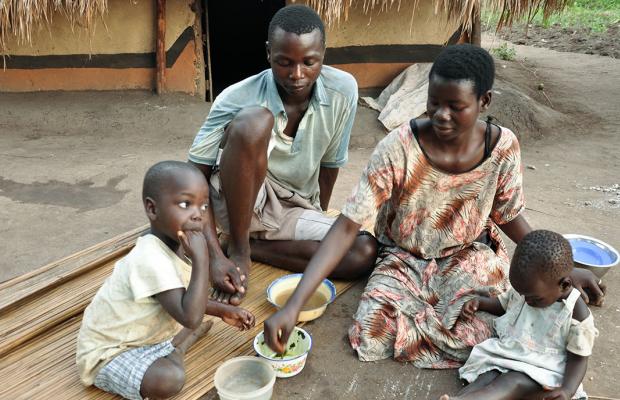
Kampala, Uganda | THE INDEPENDENT | Growing levels of hunger are forcing families to eat locusts, wild leaves, or cactus to survive while millions of others are forced to sell or marry off their children or even sell assets to get food.
According to the UN World Food Programme (WFP), the number of people teetering on the edge of famine in 43 countries has risen to 45 million – up by three million this year – as acute hunger spikes around the world. This number has risen from 42 million earlier in the year, and 27 million in 2019, the agency said in a news release.
The increase is based on those who desperately live within the official hunger classification IPC4, a classification for emergency or worse situations and above in East Africa, especially countries like Burundi, Kenya, Somalia, South Sudan, Angola, and Ethiopia, among others.
The agency said families in these countries are facing acute food insecurity, are being forced to make devastating choices to cope with the rising hunger. A vulnerability analysis across the 43 countries surveyed, shows families being forced to eat less or skip meals entirely. Sometimes children are being fed, while parents sacrifice meals, and are forced to go hungry.
In South Sudan, humanitarian needs are outpacing the resources available for WFP to respond, and the situation has worsened as the country is battered by flooding that has swallowed entire villages. There are 7.2 million people who are severely food insecure with more than 1.4 million of those in Emergency and more than 100,000 facing catastrophic levels of hunger. WFP urgently requires USD 568 million to maintain its operations for the next six months.
“Tens of millions of people are staring into an abyss. We’ve got conflict, climate change and COVID-19 driving up the numbers of the acutely hungry, and the latest data show there are now more than 45 million people marching towards the brink of starvation,” said WFP Executive Director David Beasley.
“While COVID is undeniably exacerbating fragility around the world, man-made conflict is driving instability and powering a destructive new wave of famine that threatens to sweep the world. The toll is paid in human misery is unimaginable.”
WFP said that together with humanitarian partners in hunger hotspots across the world, they are doing everything possible to increase aid for millions who risk starvation. However, available resources are unable to keep pace with demand, at a time when traditional funding streams are under huge strain.
“Fuel costs are up, food prices are soaring, fertilizer is more expensive, and all of this feeds into new crises as well as long-standing emergencies,” Beasley said.
Food prices hit a ten-year high this month, according to the UN Food and Agriculture Organization’s Food Price Index. This not only pushes food out of reach for millions of the poorest around the globe but also increases the cost of procuring food on global markets. Added to this are the high prices of fuel which also increases transportation costs and places a further strain on global supply chains.
WFP Chief Economist Arif Husain explained how spiralling costs were affecting the organization’s work and required urgent cash support. He added that the WFP needs USD 300 million more to buy the same amount of food as last year.
“Food procurement prices are up 21 per cent from a year ago — USD 300 million more if we bought the same amount of food as last year,” he said. “Transport costs are through the roof because of high fuel prices — a container that cost USD 1,000 a year ago now costs USD 4,000 or even more.”
Updated figures due out this week are likely to paint an even bleaker picture of people in need, said Husain: “Don’t expect these numbers to go down unless we solve the conflicts, climate crises and economic fallout of COVID-19. I grieve when any child is harmed and we work every single day to give millions of children hope and a future.”
WFP estimates that the cost of averting famine globally now stands at USD 7 billion, up from some 6.6 billion, earlier in the year. “As the cost of humanitarian assistance rises exponentially, we need more funds to reach families across the globe who have already exhausted their capacity to cope with extreme hunger,” added the WFP chief.
*****
URN
 The Independent Uganda: You get the Truth we Pay the Price
The Independent Uganda: You get the Truth we Pay the Price



Food insecurity due to climate change.